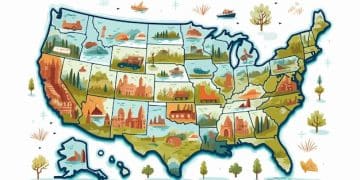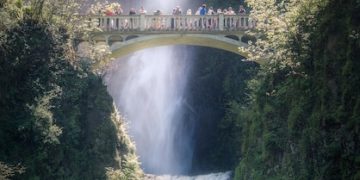Discover US Wildlife Refuges: A 2024 Travel Guide
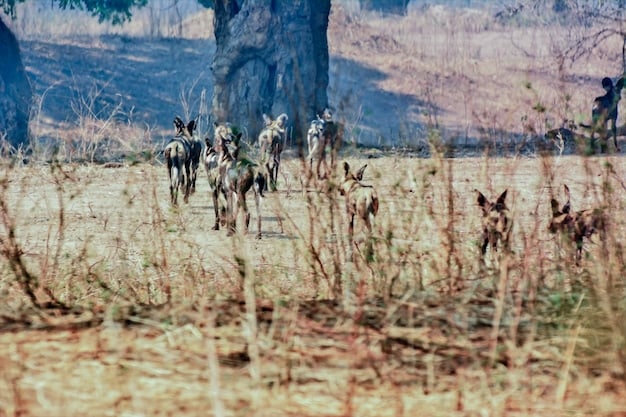
Anúncios
Plan your visit to US Wildlife Refuges with this updated travel guide to spot rare species and support conservation efforts, offering insights on the best locations, activities, and how to contribute to protecting these natural habitats.
Embark on an unforgettable journey through America’s stunning landscapes with our updated travel guide to US Wildlife Refuges: Spot Rare Species and Support Conservation Efforts. This guide will navigate you through prime locations for wildlife viewing, provide crucial tips for ethical exploration, and highlight ways to contribute to conservation efforts, fostering a deeper connection with nature.
Anúncios
Exploring US Wildlife Refuges: An Updated Guide
The United States boasts a remarkable network of wildlife refuges, each offering unique ecosystems and opportunities to connect with nature. Whether you’re an avid birdwatcher, a passionate photographer, or simply someone seeking solace in the great outdoors, these refuges provide unparalleled experiences. This guide is designed to help you make the most of your visits while supporting conservation goals.
Discovering these natural treasures requires careful planning and a commitment to responsible tourism. By understanding the unique characteristics of each refuge and following best practices for wildlife viewing, you can ensure that your visit is both enjoyable and beneficial to the environment.
Anúncios
Understanding the National Wildlife Refuge System
The National Wildlife Refuge System, managed by the U.S. Fish and Wildlife Service, is a network of over 560 refuges dedicated to conserving wildlife and their habitats. These refuges protect a wide range of species, from endangered mammals to migratory birds, and offer recreational activities such as hiking, fishing, and wildlife observation.
Each refuge is managed with specific conservation goals in mind, reflecting the unique ecological characteristics of the area. Understanding these goals can enhance your appreciation for the refuge and guide your interactions within it.
- Learn about the specific species that the refuge aims to protect.
- Check the refuge’s website for information on ongoing conservation projects.
- Respect closures and restrictions designed to protect sensitive habitats.
Visiting a national wildlife refuge is a unique opportunity to support conservation efforts while experiencing the beauty of the natural world. By learning about the refuge system and following responsible tourism practices, you can play a vital role in protecting these valuable ecosystems.
Planning Your Visit: Essential Tips and Considerations
Before embarking on your journey to a US Wildlife Refuge, it’s essential to plan meticulously to ensure a safe, enjoyable, and environmentally responsible experience. Proper planning involves researching your destination, understanding seasonal changes, and being prepared for various weather conditions.
This section of the guide will cover the essential preparations to consider for a successful trip.
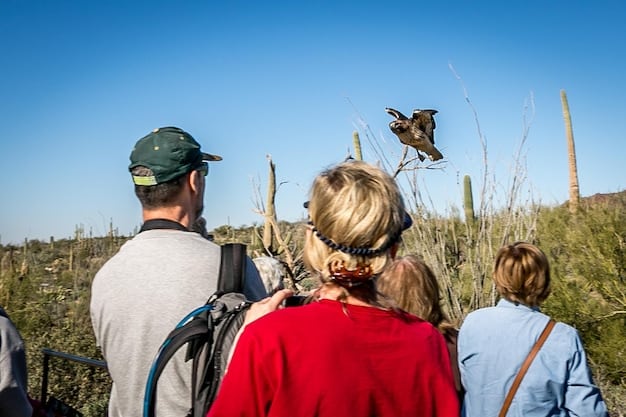
When to Visit: Seasonal Considerations
The optimal time to visit a wildlife refuge can vary significantly depending on your goals and the specific refuge you plan to explore. Each season brings unique opportunities for wildlife viewing and different environmental conditions to consider.
For example, spring and fall migrations often offer the best chances to see large numbers of birds, while summer may be ideal for observing nesting behaviors. Winter can provide a starkly beautiful landscape and opportunities to spot species that are less active during other times of the year.
Consider these points when planning:
- Research migration patterns of key species in your target refuge.
- Check weather forecasts for your travel dates to pack appropriately.
- Be aware of seasonal closures or restricted areas within the refuge.
What to Pack: Gear and Supplies
Packing the right gear can significantly enhance your comfort and safety while exploring a wildlife refuge. Essential items include appropriate clothing, sturdy footwear, and equipment for wildlife observation and photography.
- Binoculars for close-up views of birds and other wildlife.
- A camera with a telephoto lens to capture distant subjects.
- Sunscreen, insect repellent, and a hat for protection from the elements.
Preparing for various weather conditions can help you adapt to changing circumstances during your visit. Always check the forecast before you go, and pack layers so you can adjust to fluctuating temperatures.
Careful planning is essential for a successful and enjoyable visit to a wildlife refuge. By considering seasonal changes, packing appropriate gear, and making necessary reservations, you can ensure that your trip is both rewarding and respectful of the environment.
Top Wildlife Refuges to Visit Across the US
The US boasts a remarkable array of wildlife refuges, each offering unique landscapes and opportunities to encounter diverse wildlife. Here are some of the top refuges to consider for an unforgettable nature experience.
These refuges can range from coastal havens for migratory birds to desert landscapes teeming with reptiles and mammals.
J.N. “Ding” Darling National Wildlife Refuge, Florida
The J.N. “Ding” Darling National Wildlife Refuge in Florida is a premier destination for birdwatchers. Located on Sanibel Island, this refuge protects mangrove ecosystems and provides critical habitat for a wide variety of bird species, including roseate spoonbills, herons, and egrets.
Visitors can explore the refuge via wildlife drive, hiking trails, or kayak tours. Spring and fall migrations offer the best opportunities to see large numbers of birds.
Kenai National Wildlife Refuge, Alaska
Kenai National Wildlife Refuge in Alaska offers a vastly different experience, characterized by expansive wilderness and opportunities to see iconic Alaskan wildlife. The refuge encompasses diverse landscapes, including mountains, forests, and wetlands, and is home to species such as bears, moose, and caribou.
Visitors can explore the refuge via hiking trails, canoe trips, or guided tours. The summer months are ideal for hiking and wildlife viewing, while winter offers opportunities for cross-country skiing and snowshoeing.
- Consider a guided tour for a deeper understanding of the refuge’s ecology.
- Pack bear spray and know how to use it in bear country.
- Check the refuge’s website for alerts about trail closures or wildlife activity.
Bosque del Apache National Wildlife Refuge, New Mexico
The Bosque del Apache National Wildlife Refuge in New Mexico is known for its impressive concentrations of migratory birds, particularly sandhill cranes and snow geese. Located along the Rio Grande River, this refuge provides a critical wintering habitat for these birds.
These are just a few examples of the many exceptional wildlife refuges that the US has to offer. Each refuge provides a unique opportunity to connect with nature and support conservation efforts.
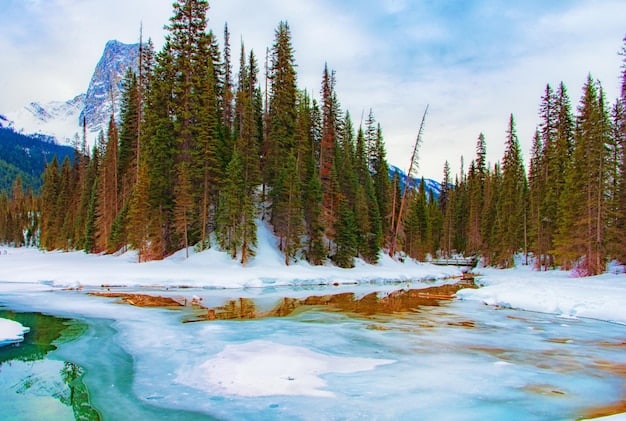
Ethical Wildlife Viewing: Minimizing Your Impact
When visiting a wildlife refuge, it is essential to practice ethical wildlife viewing to minimize your impact on the environment and the animals that call it home. By following a few simple guidelines, you can ensure that your visit is both enjoyable and respectful of nature.
Responsible viewing helps maintain the integrity of the refuge’s ecosystem and ensures that future generations can enjoy the same natural wonders.
Respecting Wildlife Boundaries and Behaviors
Maintaining a safe distance from wildlife is crucial for both your safety and the animal’s well-being. Getting too close can cause stress to animals, disrupt their natural behaviors, and even provoke defensive actions.
Use binoculars or a telephoto lens to observe wildlife from a distance. Avoid approaching animals, even if they appear tame or unafraid.
Avoiding Disturbance and Feeding
Disturbing animals or their habitats can have long-lasting consequences. Avoid making loud noises, approaching nesting sites, or interfering with natural behaviors.
- Never feed wildlife, as this can alter their natural foraging behaviors and make them dependent on humans.
- Stay on marked trails to avoid trampling vegetation or disturbing sensitive habitats.
- Pack out all trash and dispose of it properly to prevent pollution and harm to wildlife.
Choosing Sustainable Practices
Choosing sustainable practices when visiting a wildlife refuge helps minimize your overall impact on the environment. Consider using reusable water bottles, packing snacks in reusable containers, and avoiding single-use plastics.
Ethical wildlife viewing is about more than just following the rules; it’s about cultivating a sense of respect and responsibility towards nature. By minimizing your impact and promoting sustainable practices, you can help protect wildlife refuges for future generations.
Supporting Conservation: How to Get Involved
Visiting a wildlife refuge is a great way to appreciate nature, but it’s also an opportunity to support conservation efforts. There are many ways to get involved, from volunteering your time to donating to conservation organizations.
Your actions can make a tangible difference in protecting wildlife and their habitats.
Volunteering Your Time and Skills
Many wildlife refuges rely on volunteers to help with a variety of tasks, such as habitat restoration, trail maintenance, and visitor education. Volunteering is a great way to give back to the community and gain valuable experience in conservation.
Contact your local refuge to learn about volunteer opportunities. You can also check the websites of national conservation organizations for volunteer programs in your area.
Donating to Conservation Organizations
Financial contributions to conservation organizations can provide critical support for research, habitat preservation, and wildlife management. Consider donating to organizations that focus on protecting wildlife refuges and their ecosystems.
- Look for organizations with a proven track record of success and a commitment to transparency.
- Consider setting up a recurring donation to provide ongoing support for conservation efforts.
Educating Others and Spreading Awareness
One of the most impactful ways to support conservation is to educate others about the importance of protecting wildlife and their habitats. Share your experiences in wildlife refuges with friends and family, and encourage them to visit these natural treasures.
Supporting conservation is a shared responsibility. By volunteering your time, donating to conservation organizations, and educating others about the importance of protecting wildlife, you can help ensure that future generations can enjoy the beauty and wonder of US Wildlife Refuges.
The Future of US Wildlife Refuges: Challenges and Opportunities
As we look to the future, US Wildlife Refuges face a range of challenges, from climate change and habitat loss to increasing human encroachment. Understanding these challenges is essential for developing effective conservation strategies and ensuring the long-term health of these valuable ecosystems.
At the same time, there are also significant opportunities to enhance conservation efforts and engage more people in protecting wildlife refuges.
Addressing Climate Change Impacts
Climate change poses a significant threat to wildlife refuges, altering habitats, disrupting migration patterns, and increasing the risk of extreme weather events. Addressing these threats requires a multifaceted approach, including reducing greenhouse gas emissions, restoring degraded habitats, and implementing climate-adaptive management strategies.
Many refuges are working to reduce their carbon footprint and promote sustainable practices. Support these efforts by advocating for climate-friendly policies and making environmentally responsible choices in your daily life.
Combating Habitat Loss and Fragmentation
Habitat loss and fragmentation are major drivers of biodiversity loss, isolating wildlife populations and reducing their ability to adapt to changing conditions. Protecting and restoring habitats within and around wildlife refuges is crucial for maintaining healthy ecosystems and supporting diverse wildlife populations.
- Support land conservation initiatives that protect critical habitats.
- Participate in habitat restoration projects, such as tree planting and wetland creation.
Engaging Future Generations
Engaging future generations in conservation is essential for ensuring the long-term sustainability of US Wildlife Refuges. By connecting young people with nature and providing opportunities for them to learn about wildlife and conservation, we can inspire a lifelong commitment to protecting our natural heritage.
The future of US Wildlife Refuges depends on our collective efforts to address the challenges they face and seize the opportunities to enhance conservation. By supporting climate action, protecting habitats, and engaging future generations, we can help ensure that these natural treasures thrive for years to come.
| Key Point | Brief Description |
|---|---|
| 🧭 Planning Tips | Research destinations and seasonal changes before visiting. |
| 📸 Ethical Viewing | Respect wildlife, maintain distance, and avoid disturbance. |
| 🌱 Conservation | Volunteer, donate, and educate others about wildlife protection. |
| 🌍 Future Challenges | Address climate change, habitat loss, and engage future generations. |
FAQ
▼
US Wildlife Refuges are protected areas managed by the U.S. Fish and Wildlife Service to conserve wildlife and their habitats. These refuges offer diverse recreational activities like hiking and birdwatching while prioritizing conservation efforts.
▼
The best time to visit varies, depending on your goals and the specific refuge. Spring and fall migrations are ideal for birdwatching, while summer is suitable for observing nesting behaviors. Check each refuge’s website for seasonal recommendations.
▼
Essential items include binoculars, a camera, sunscreen, insect repellent, and appropriate clothing. Sturdy footwear and layers are recommended for varying weather conditions. Consider bringing reusable water bottles and containers to minimize waste.
▼
You can support conservation by volunteering your time, donating to conservation organizations, and educating others about wildlife protection. Additionally, practice ethical wildlife viewing and minimize your impact on the environment.
▼
Major challenges include climate change, habitat loss, and increasing human encroachment. Addressing these issues requires climate-adaptive management, habitat restoration, and engaging future generations in conservation efforts to protect our natural heritage.
Conclusion
Exploring US Wildlife Refuges offers a unique opportunity to connect with nature while supporting crucial conservation efforts. By planning your visits thoughtfully, practicing ethical wildlife viewing, and getting involved in conservation initiatives, you can contribute to the preservation of these valuable ecosystems for generations to come.



